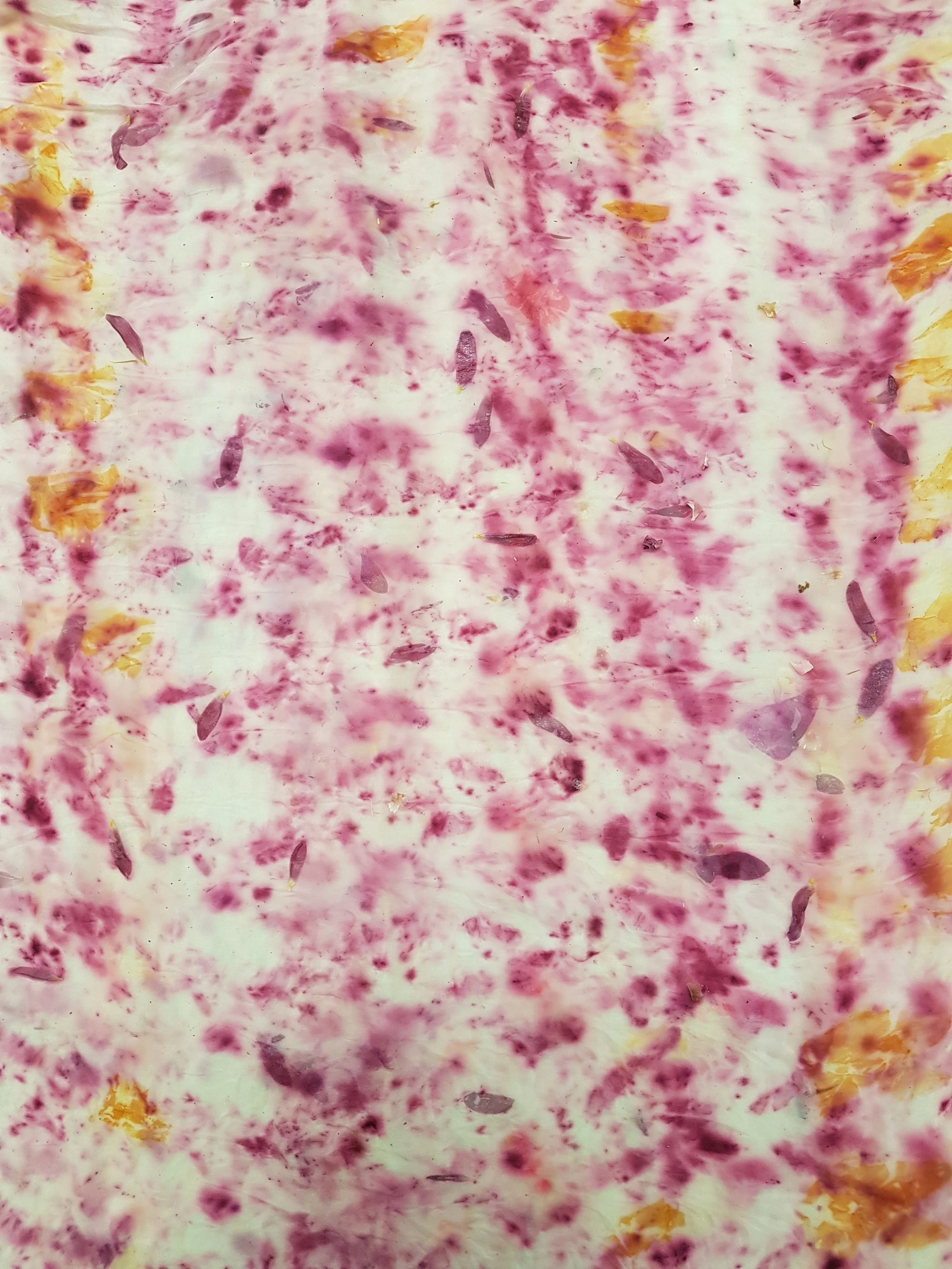Natural Dyes - The Beginning
Note before reading: This blog was written in 2017, when I was studying for my MA (hence the Harvard referencing!). Where needed, I have edited these posts to correct any factual inaccuracies. This post was last edited Jan 2025.
Earlier this year, I attended a workshop at Bristol Textile Quarter, facilitated by Babs Behan of Botanical Inks. It was an introduction to Natural Dyeing, and my first foray into the various techniques that can be applied to colour fabric with things from nature.
We learnt about and tried bundle dyeing, shibori and hapazome. Using organic, ethical silk as the base fabric, we scattered petals from ethically grown flowers, onion skins and inks and powders made with materials such as logwood and gallnut. The fabric had been pre-mordanted with alum, which aids in fixing the dye to the cloth, preventing fading from light exposure. Sprinkling petals onto the fabric in a pattern, I then applied a mist of vinegar, which helps enhance the pigments in the flowers, and then folded tightly.
The circular piece was just bundle dyed, which was steamed on a stove for an hour, rotating every 15 minutes. The triangle piece was folded using Shibori-style techniques and was placed in a dyebath of Brazilwood for an hour.
After the dyebath, the fabrics had been transformed - in the images above you can see what the tied fabrics looked like once out of the dyebath, and how they looked once they had been unfolded. I was really impressed with the vibrancy of the colour that the combination of petals and Brazilwood had formed in particular. The petals and leaves that were removed from the fabric were returned and could be used again once dry - although they may not have the same potency.
I left with my damp fabric samples in my bicycle pannier, a notepad scribbled with technical details and a head full of ideas as to how I could use these skills in my knitwear practice. As we used silk in the workshop, the same methods could be used on wool as they are both animal fibres.
Burns, R. (2017) Bundle Dyeing 7. (Own Collection)
Having left my samples to 'cure' in my airing cupboard for a few weeks (more like a month, as I went on holiday and forgot about them!), I washed them in PH neutral soap and left to dry.
Sadly, a lot of the vibrancy has been lost, with the pinks almost completely disappearing. I assumed that because the fabric had been mordanted that this wouldn't be the case, however from further reading I have realised that achieving a colourfast naturally dyed fabric can be quite difficult. Kristine Vejar in Grist wrote:
The more tannins in a dye, the greater the colorfastness; and some ingredients, like tea, have such strong tannins that they don’t require mordanting to affix to the fabric.
This has provided me with a very interesting new research point, as I can look into the various types of mordants and dyestuffs, and analyse whether they produce a more colourfast result.
References:
Burns, R. (2017) Bundle Dyeing 1-7. (Own Collection)
Vejar, K. (2015) Go all-natural with fabric dye for fabulous, earthy colors. [Online]. Accessed 18 October 2017]. Available from: http://grist.org/living/go-all-natural-with-fabric-dye-for-fabulous-earthy-colors/






